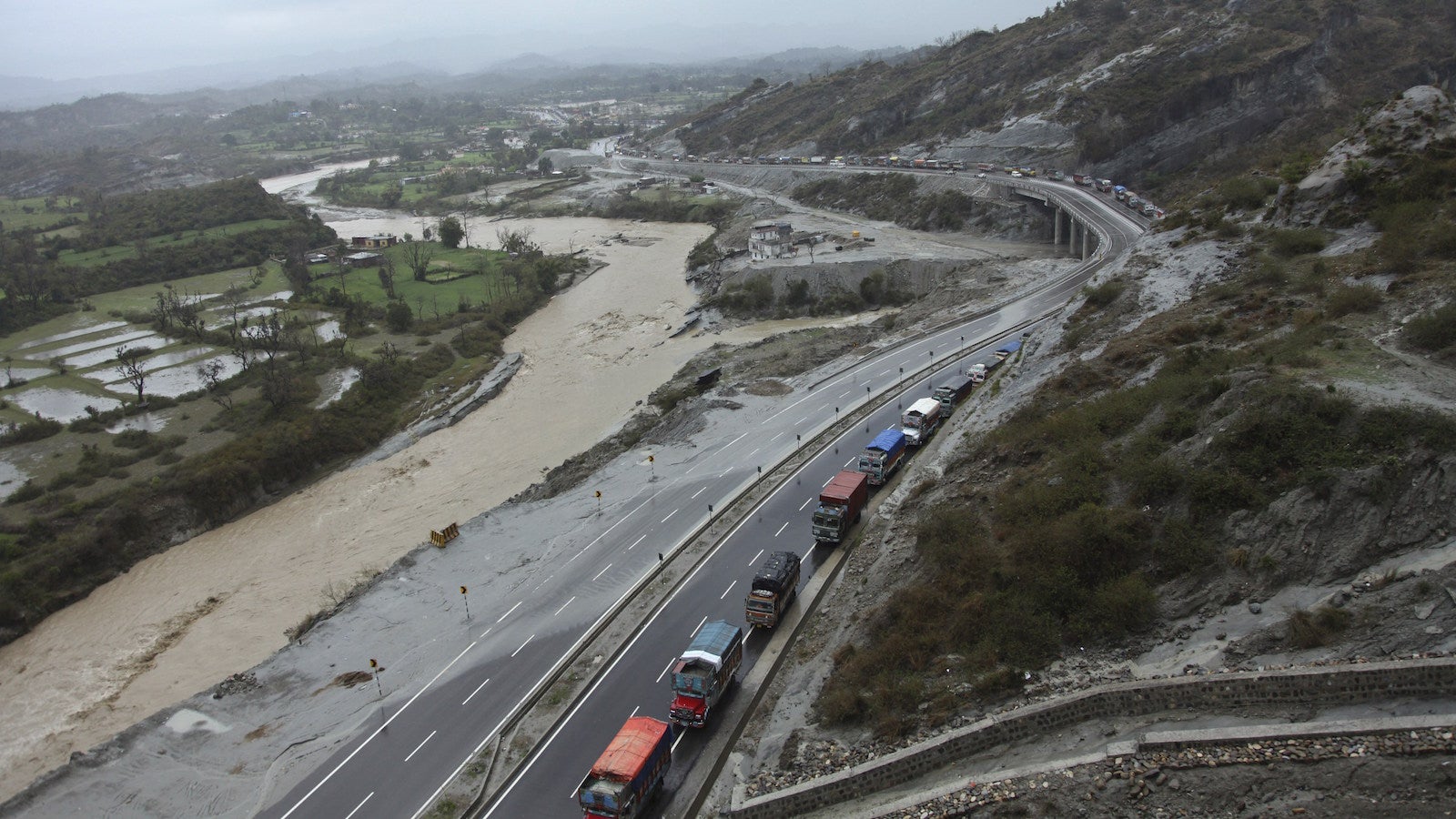Is Modi’s new $2 billion trans-India highway project just too ambitious?
Narendra Modi wants to build a massive new highway that cuts across the heart of the country, connecting all of India’s Himalayan states.


Narendra Modi wants to build a massive new highway that cuts across the heart of the country, connecting all of India’s Himalayan states.
The Indian prime minister wants to do this in five years, at an estimated cost of Rs14,000 crore ($2.2 billion), the Economic Times reported.
But that might be simply too ambitious.
To start with, the financials of the project seem a little off. Building one kilometre of highway in India, according to industry estimates, requires a minimum of about Rs10 crore ($1.5 million). By that measure, constructing 5,300 kilometres of new highway will cost the government, somewhere around Rs53,000 crore ($9 billion).
Yet, the budget for the Bharat Mala project, as this new plan has been named, which will connect Gujarat in the west to Mizoram in India’s northeast, is reportedly only about Rs14,000 crore.
Presumably, the government will reach out to the private sector for additional funding, but there might not be enough appetite in India Inc. for such a project. “Most of the funding will have to come from the government itself,” said Vishwas Udgirkar, a partner at consultancy firm Deloitte Touche Tohmatsu. “These routes will not see heavy traffic and that would mean that the private sector does not see potential.”
Putting out that sort of money won’t exactly be easy for the government either, which has been struggling to cut expenditure, and restrain the fiscal deficit.
It doesn’t help that India’s road sector has itself been a complete mess for many years.
Until January 2014, as many as 161 projects—worth some Rs83,000 crore—out of a total of 220 projects awarded under the public-private-partnership mode were unfinished. Between April 2014 and January 2015, the road ministry completed construction of only about 3,038 kilometres of road against a target of 6,300 kilometres. India now plans to complete construction of 30 kilometres of road per day for the next two years.
“There is a huge agenda already pending before the road sector both at the central and state level, including challenging areas such as the borders,” Vinayak Chatterjee, chairman at Feedback Infra, said. “The announcement of such a project could improve greater confidence if accompanied by scientific traffic flow estimates on the proposed alignment.”
Moreover, the Indian government will have to acquire an enormous ribbon of land that could stretch across as many as 13 states.
After beginning in Gujarat, the Bharat Mala project will cut through Rajasthan and Punjab, then cover all the Himalayan states—Jammu and Kashmir, Himachal Pradesh, Uttarakhand—before moving to Uttar Pradesh and Bihar. Finally, it will also touch northeastern states of Sikkim, Assam, Arunachal Pradesh, Manipur and Mizoram.
“Our idea is to plan for a structured programme for building roads along our borders, especially the northern borders,” India’s road secretary Vijay Chhibber told the Economic Times newspaper.
Telephone calls and text messages to Chhibber from Quartz went unanswered. The post will be updated if, and when, he reverts.
But acquiring land across such an expansive stretch won’t be easy. For India’s National Highway Authority, the lead government organisation for road construction in India, the inability to acquire land has been a massive problem.
“During the review meetings, it is observed that the land acquisition is one of the reasons for delay of completion of projects” Pon Radhakrishnan, minister of state for roads, said last month. Over 600 road projects in India are currently delayed due to land acquisition problems.